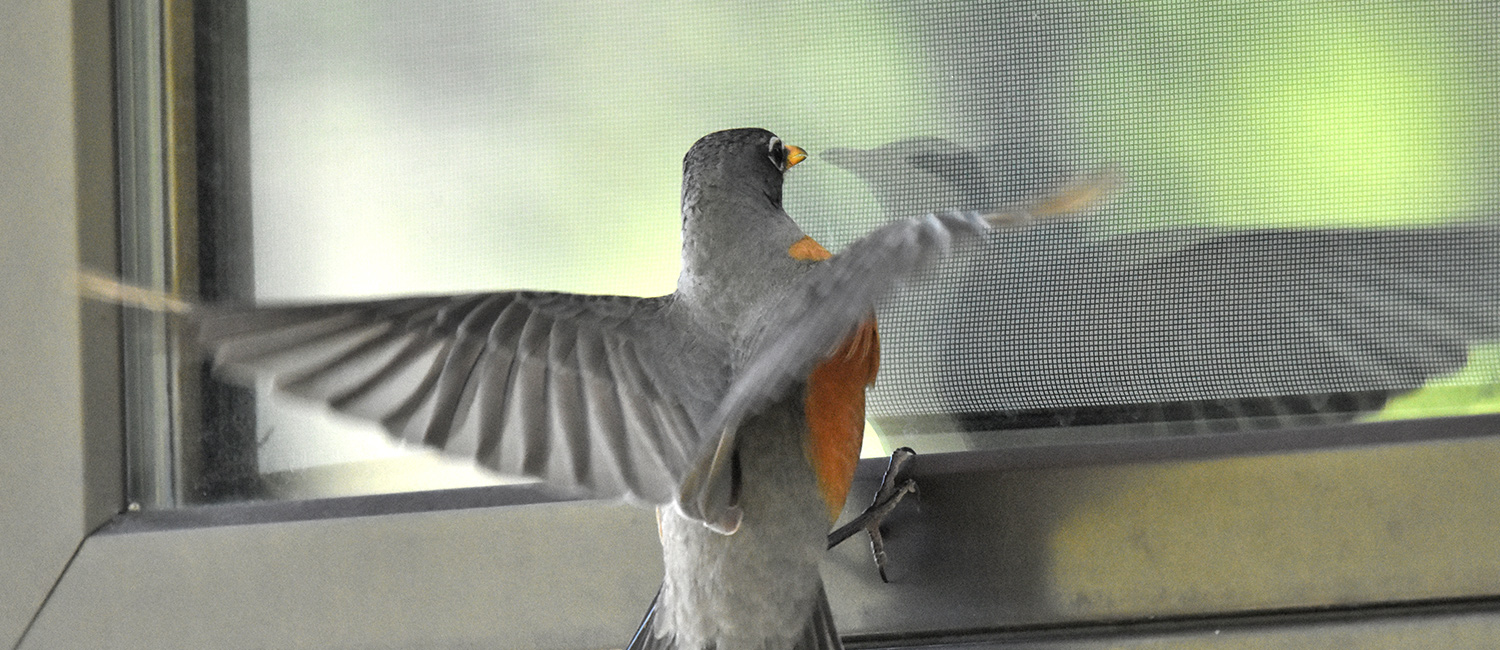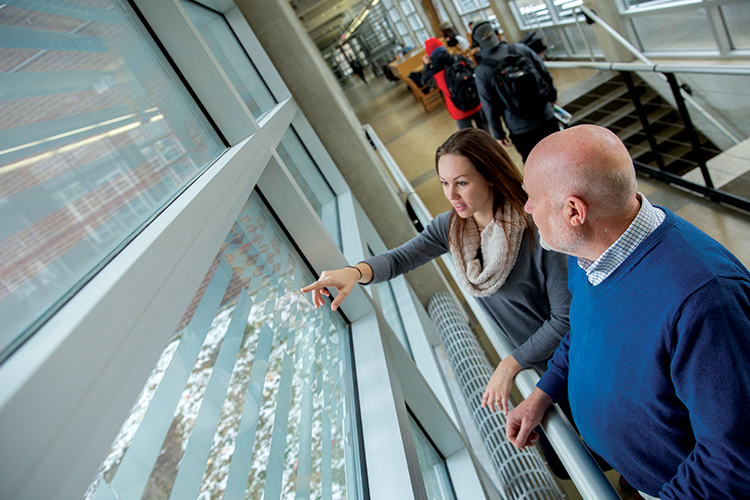
When data is for the birds
Erica Gerloski remembers reading a book by famed ornithologist John James Audubon when she was in the fifth grade.
“I loved what he wrote and the pictures that he painted,” says the UWM junior, a conservation and environmental science major, “and I told people that I wanted to be an ornithologist when I grew up.”
These days, she’s helping the birds she loves by gathering data on dead ones around UWM’s campus. It’s research directed by Glen Fredlund, a UWM associate professor of geography, aimed at reducing collisions between birds and buildings. Such strikes kill between 365 million and 988 million birds annually in the United States.
Fredlund’s team – which includes students studying conservation, geography and architecture – wants to reduce that toll, especially at UWM. He and undergraduate volunteers started using clipboards and paper maps in 2014 to record bird strike data on campus. Now, students like Gerloski record data through a mobile app that uses geographical information systems software and is instantly uploaded to an online map. They can zero in on places that are particularly hazardous for birds, which helps them devise solutions. “GIS software has a wide range of applications,” Fredlund says, “so for students to gain real-world skills with these tools is really valuable.”
They also gain a deeper appreciation for the birds’ plight. “I remember one morning,” Gerloski says, “Professor Fredlund and I saw seven birds, including two golden-crowned kinglets, all in one spot under the skywalk between the Union and Bolton Hall, and it was so sad to see those little guys.” The skywalk has highly reflective glass, suspected as a strong contributing factor in bird strikes. Modifications to windows at a problem spot on the School of Architecture & Urban Planning building have already been made, and they’re having a positive effect.

Engineering students are creating cost-effective cameras to monitor other problem areas, which will provide more precise data on strikes. “It’s almost impossible to simply look at a building and know where and why these strikes occur,” says Fredlund, who partners with architecture faculty members Filip Tejchman and Mike Utzinger to lead the bird-collision study. “It’s only through data collection that we can identify those variables, measure which ones are larger problems and determine those that we can cost-effectively mitigate.”
All the while, Gerloski gains research experience while tackling an issue close to her heart. “I really enjoy working on environmental problems while being in the heart of a city,” she says, “and this project has definitely opened my eyes to other career possibilities.”